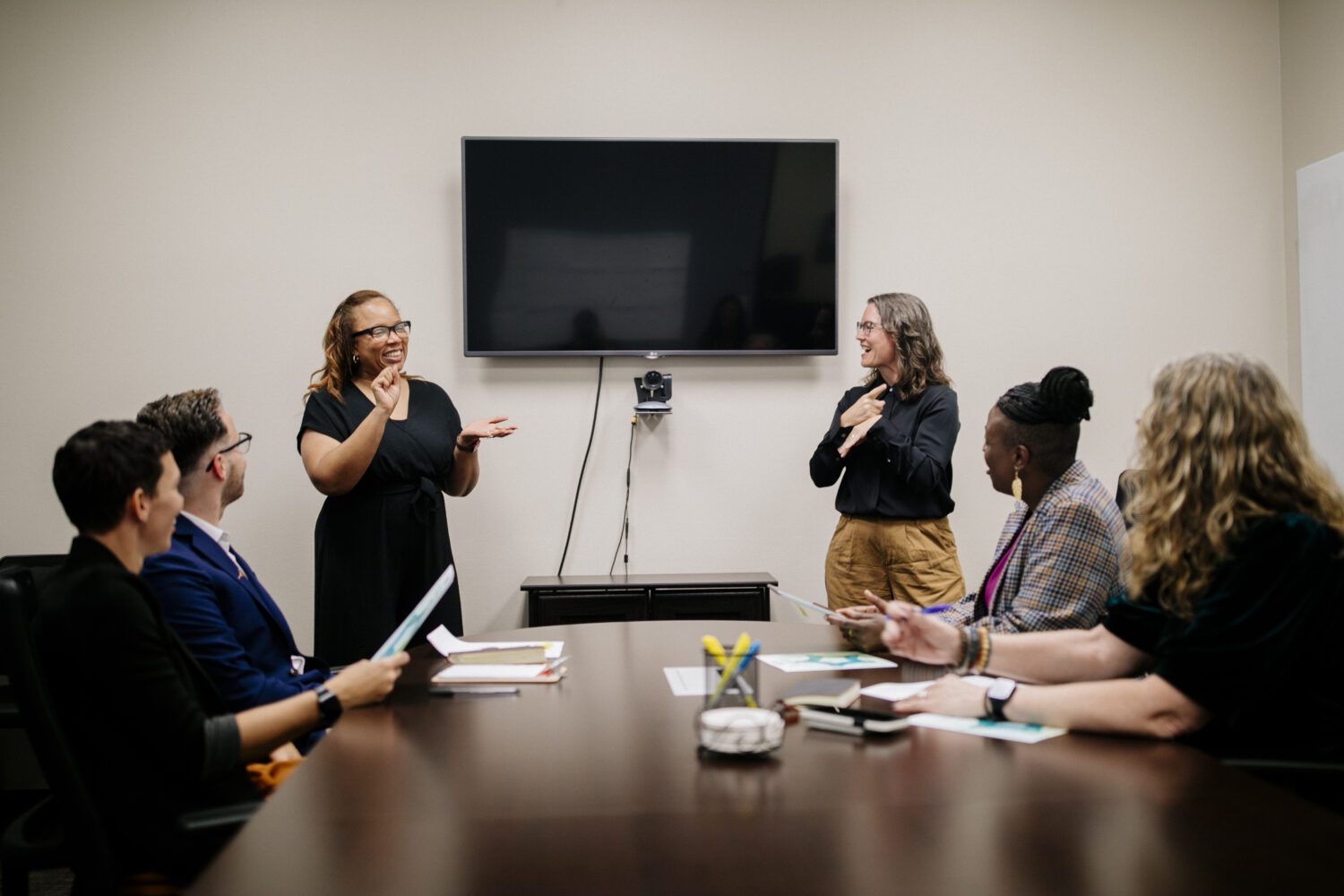Vocational rehabilitation (VR) support and services can be an important factor for deaf people in reaching employment goals, pursuing further education, and achieving success after high school. But understanding what’s available and getting through the doors of VR offices can sometimes be challenging and confusing.
In a new series of videos from the National Deaf Center on Postsecondary Outcomes (NDC), two nationally known experts offer practical tips on pursuing VR services, address common worries, and share their insights and stories about how VR can improve #DeafSuccess for deaf youth preparing for the transition to life after high school.
The Operative Word is “Try”
In the video What Can VR Do For You?, Elise Knopf advises that, if someone tells a deaf student they can’t work or can’t do something, people should remember “the operative word is ‘try.’” As Rehabilitation Area Manager for the Minnesota Department of Employment and Economic Development, Knopf explains that VR specializes in creating services around each person’s unique skills and interests, fighting for their right to try, and promoting high expectations.
A #DeafSuccess story herself, Knopf also shares that there are many VR success stories from a wide range of people, especially since students can now begin VR at 14 years old. They can get an earlier start on identifying career paths, finding role models, and “feeling they can develop and grow.”
Meeting Needs and Goals
Bedarius Bell, Coordinator of Deaf Services for Alabama Vocational Rehabilitation and a recent panelist for NDC’s VR professional events, is featured in the other two videos in the series:
He emphasizes that VR services are designed to meet each person’s particular needs, but may vary state by state depending on funding or other factors. He highlights improving communication access through accommodations and assistive listening devices.
Bell also explains how to remain persistent when VR services are not available or if a student doesn’t qualify despite eligibility, advising they seek financial aid and grants for college or use Pre-Employment Transition Services (Pre-ETS) for pursuing employment goals.
Make the Most of VR Services
The cornerstone of the video series is Plan Your Future: A Guide to Vocational Rehabilitation for Deaf Youth, a new NDC resource that helps deaf youth and their families know what services are available, figure out who to contact, and gather the right information to ensure they get the most out of their state’s VR services.
Available in English, Spanish and ASL, the guide clearly explains common terms used by VR offices, outlines what services may or may not be available, and explains how to find out if someone qualifies for services. Though each state has its own processes and requirements, the information in the guide can help families regardless of where they live within the U.S. and its territories.
There is also a downloadable checklist that can be used by families when planning their VR meeting or by educators as a classroom activity.
More Resources
In addition to the VR video series, NDC has a host of resources to help deaf youth and their families navigate the transition from high school to college, training, or career — including back to school guides for Fall 2020 and a COVID-19 Information page with tips for managing online classes, using hearing assistive technology at home, playing Deafverse, and more.
Also read the frequently asked questions the NDC | help team receives from students and families. The help team is available via email at help@nationaldeafcenter.org to answer questions, provide resources, and connect you with the right people.








